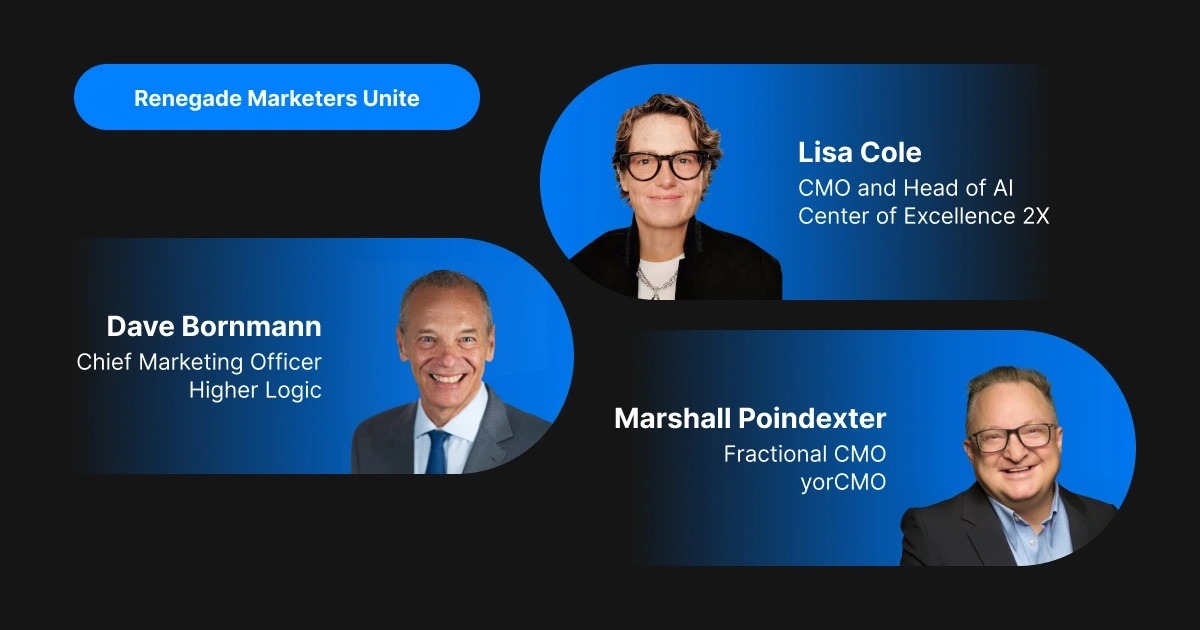November 5, 2019 | Blog
6 B2B marketing strategies to improve conversion rates

When it comes to B2B marketing, your website is the first front that potential clients encounter, and that first impression will either lead them to want to know more or to hit the back button to search for your competitors.
The conversion rate refers to when a visitor finds your site from a traffic source such as a search engine, email campaign, or ad; and then engages with your content (i.e., downloading a whitepaper, registering for a webinar, listening to a podcast), requests a proposal, contacts you directly through a form submission, or starts a conversation with a chatbot.
In most cases, the conversion rate for B2B is relatively low as compared to B2C–between 2.23 and 4.31% according to WordStream–and many factors can impact that conversion rate.
In this post, we will cover some of the most effective tactics that helped 2X improve the conversion rate for our B2B clients.
1. Make your message clear and to the point
According to HubSpot, 55% of visitors spend fewer than 15 seconds on a website, even if it’s relevant. The reason for that is when they’re looking for something to help make a decision, they want answers fast; if they bounce, it’s simply because your content didn’t convert them to the next stage.
In B2B marketing, the “buying journey” is long (with an average of 18 months), with many stages where visitors need to do research, evaluate solutions, compare, and measure ROI before reaching the buying point; on top of that, it involves six to 10 decisionmakers who each have their own perspectives and opinions.
The best way to improve the overall conversion is by investing in your content–clear and concise content that answers visitors’ questions and leads them directly to the next stage; this alone can have a massive impact on your overall conversion rate.
Good content should attract attention, pique the curiosity of readers to find out more about your products and services, and clear the way to either win them over as fans (i.e., subscribers, followers) or get them to make a direct inquiry.
2. Use SEO and pay-per-click (PPC) strategically to bring in the right traffic
Worrying about conversion rate usually comes after your website starts to generate traffic, but it’s important to consider the quality of the traffic itself, which has an impact on your conversion rate.
Not every visitor is going to be a match from your target audience, and generating relevant traffic is an expensive and difficult business.
Google, for example, is the largest digital ad seller in the world, and in 2019, accounts for 31.1% of worldwide of ad spending, or $103.73 billion. And that amount is only to generate traffic from PPC, without any guarantee that traffic will convert.
The best way to improve the conversion from your website traffic is to make sure that you are targeting based on searcher intent. Aligning your content directly to what visitors are searching for will lead to a better conversion rate from that traffic.
To give you an example, every stage in the buying journey has a different intent behind it. Late-stage inquiries can include keywords that are tied directly to a service or a solution to a problem, while early-stage inquiries can include words like “what,” “how,” and “best of.”
The more you understand your customers, the better you will get at bringing in the right traffic to your website, resulting in better conversions and the ability to maximize ROI from your ad spend.
3. Remove the blocks from gated content
One of the biggest turnoffs on a website is an old-fashioned gated form that asks for too much information for a content item that your visitors might not even like.
It makes sense to ask for information in exchange for a valuable piece of content, and that’s why having a gated whitepaper is a necessary tactic for many B2B businesses. But what if we could remove that block?
To give you an example, our team at 2X worked with a client who had struggled with the conversion rate from whitepapers, which was around 5% from organic searches. One of the problems was a typical landing page that had a long form to fill out for a traditional downloadable PDF.
Instead, with FlippingBook, we converted that into an interactive PDF. Interested readers could access the whitepaper directly with one click and see the first few pages before we asked for information (a simple pop-up that requested an email and company name) to continue reading the white paper. That information was enough for us to count those conversions as leads and put them into a nurture program to convert them further.
We also integrated FlippingBook with Zapier so that the sales team gets notified every time someone reads a whitepaper and fills out a form.
By moving from the old-fashioned way of downloading a PDF whitepaper to an interactive magazine-like PDF, we managed to increase the conversion rate from 5% to 20%–four times what it was.
4. Optimize your site for conversions by using advanced data tracking
Two of the most common issues we find from working with B2B sites is the lack of tracking and the incorrect analysis of data. Data plays a significant role in optimizing the conversion process because it tells us what visitors want and why they visited the page in the first place.
With data, you can gain knowledge about your visitors to help you shape their journey from point A to point B. To do that, you must move beyond the common practice of relying on basic analytics to a more advanced form of data tracking and analysis.
For example, you can use Google Tag Manager (GTM) to track call-to-action (CTA) clicks, form fills, calls, subscriptions, and chatbots, and then set goals accordingly. Or you can use data recording tools to measure heat maps, mouse movements, and live recordings.
The data will tell you what makes more sense to your visitors, what pages they go to next, where they bounce or stop, what CTAs they click on, and if the form fill is too long for them to complete.
5. Reduce the bounce rate with exit intent pop-ups and retargeting ads
Low attention span and content quality both play a significant role in high bounce rates, but what if we could stop visitors from leaving immediately by giving them a suggestion–without being intrusive with pop-ups?
Improving the conversion rate for a blog post can be done by internally linking to content that exists elsewhere on the site, so they engage and consume more. Using pop-ups to subscribe can also work, though that can become annoying.
One of my favorite tactics is implementing an exit intent pop-up that detects the mouse movement as a visitor is about to leave the page. At that moment, a pop-up window with a new suggestion will appear, either leading visitors to additional content that is relevant or an offer to subscribe.
You can also add remarketing ads to capture attention after visitors leave your site, or to stay on their minds the next time they decide to buy.
6. Nurture leads into sales
The conversion process never stops for B2B companies, whether it’s from traffic to leads, from leads to qualified leads, from qualified leads to meetings, or from meetings to sales. On top of that, you need to optimize every step.
The buying journey for B2B is long, and nurturing leads with email campaigns is a key factor in sustaining interest during that lengthy buying process. By actively engaging visitors until they make a decision, you will not only improve your conversion rate to sales, but also convert buyers into brand promoters.


